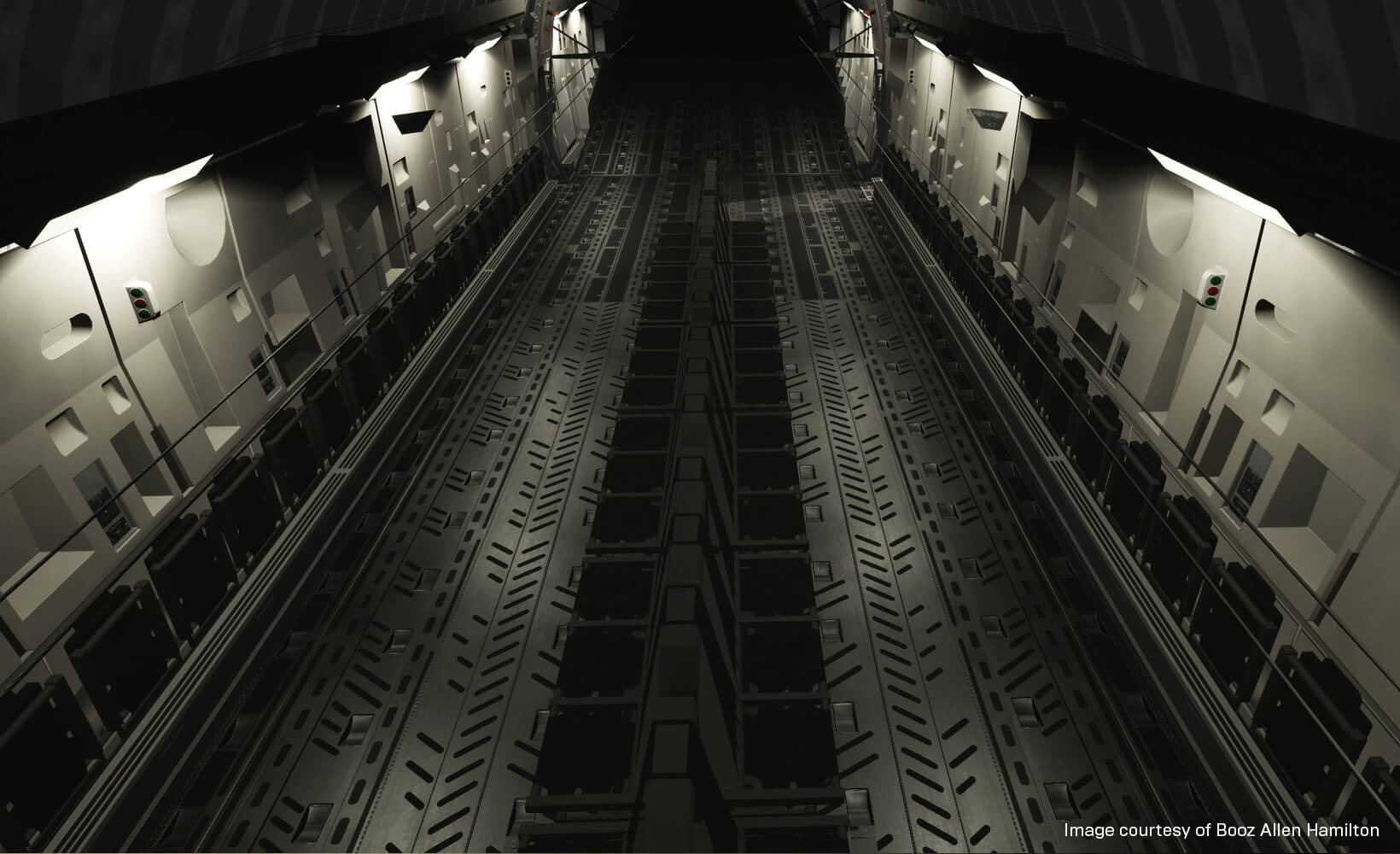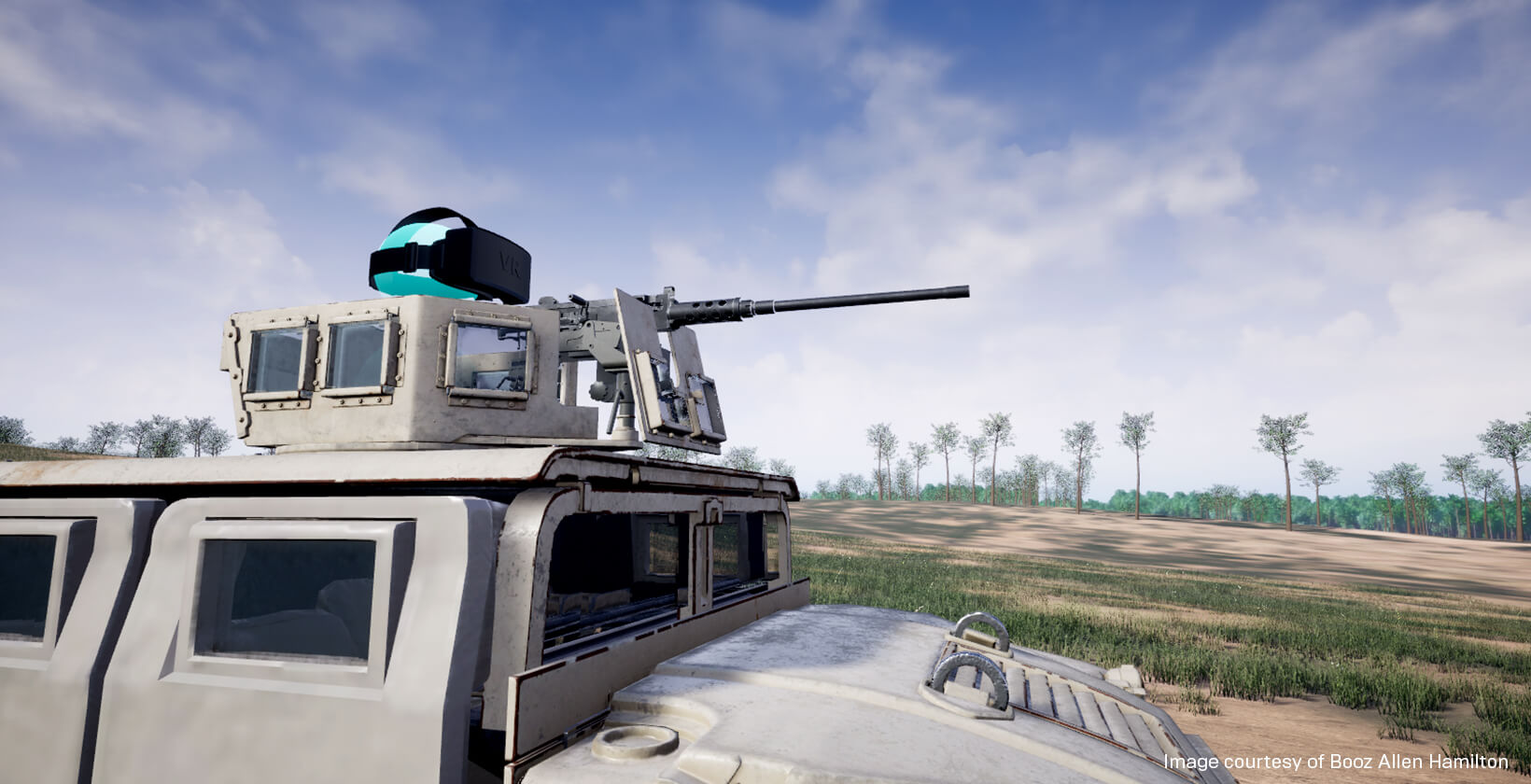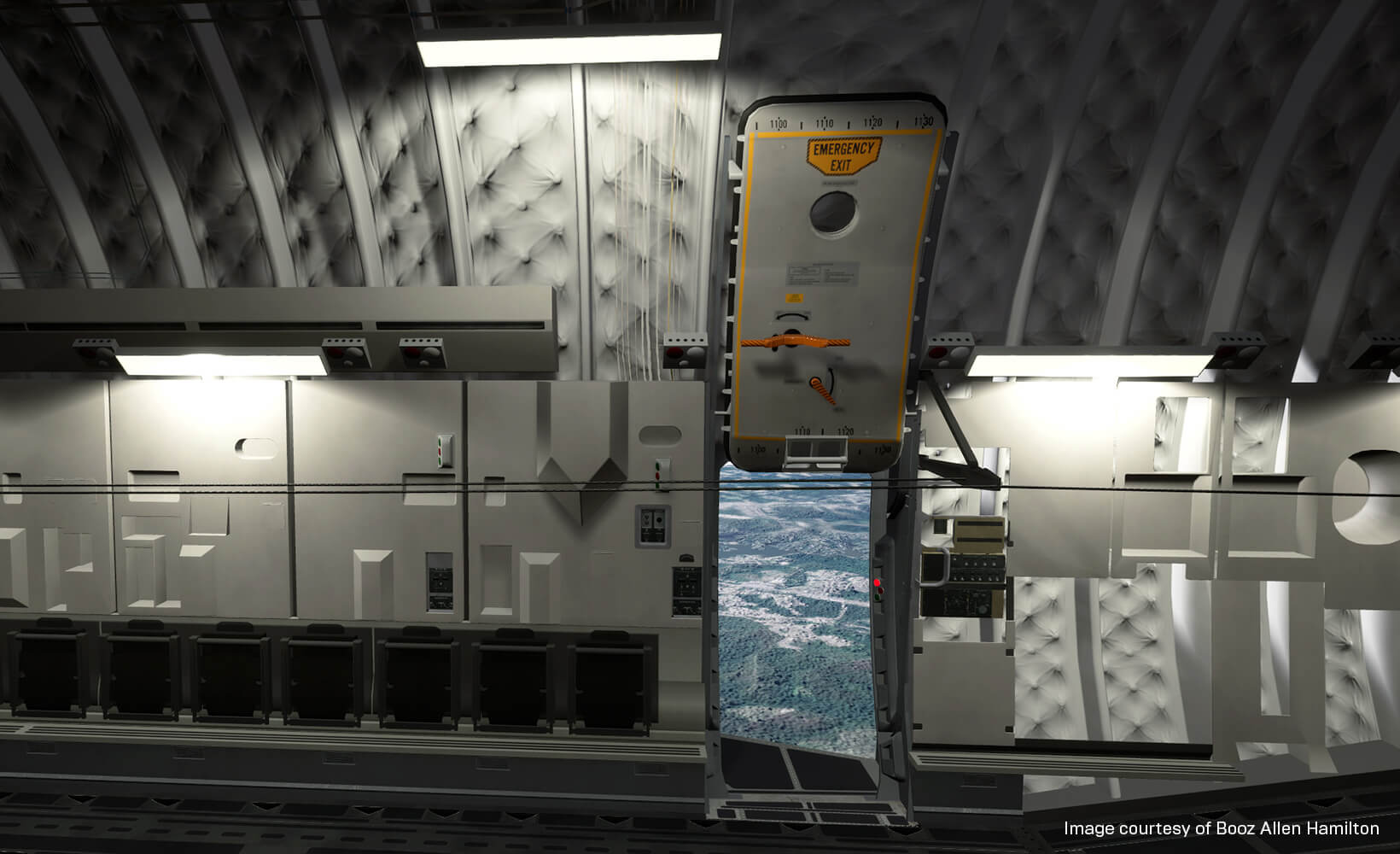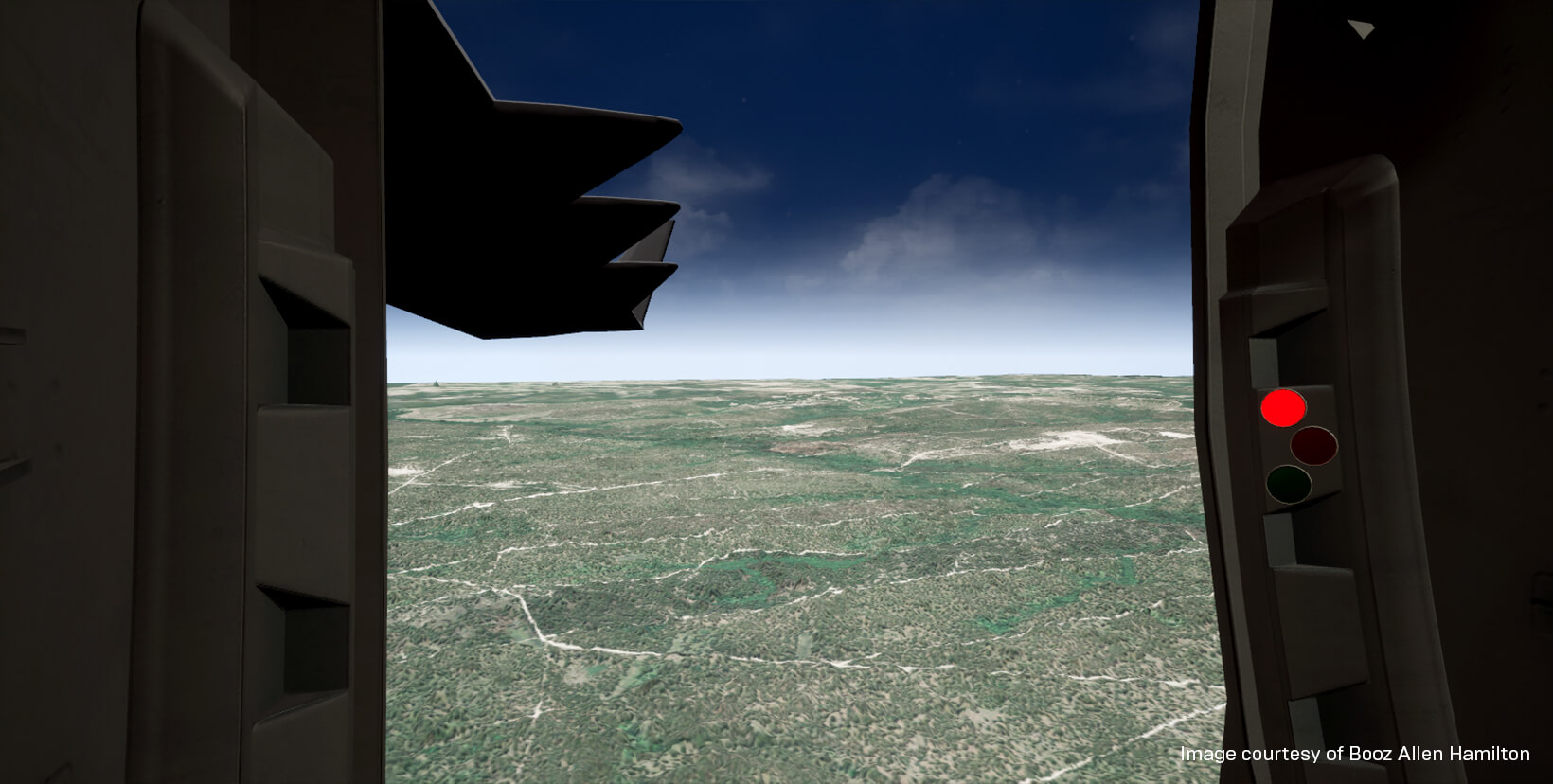2019年6月7日
Booz Allen Hamilton harnesses UE4 for mission-critical training and simulation
But in the last few years, the company has seen a shift from pure consultancy to providing technology solutions, meeting clients’ needs in areas like custom training. To supplement traditional instruction, Booz Allen started creating digital content, using real-time simulations to enrich the training experience.
As time went on, the company observed that another driver of real-time technology—the game development industry—was innovating faster than the simulation industry. They could see the potential to leverage these rapidly evolving skills and technologies like virtual and augmented reality for their own training solutions.

“In the last couple of years, we’ve started setting up game development teams, which have morphed into game studios,” says Derald Wise, a VR/AR expert at Booz Allen who leads efforts in creating immersive training applications for deploying soldiers. “We’re starting to adopt a lot of the industry practices that you see common throughout the triple-A games industry.”
Today, the company has studios from Washington to Texas, and North Carolina to D.C., all focused on integrating the capabilities from different gaming platforms, engines, and 3D software, as well as dealing with the need to keep working with older systems that have a shelf life (in terms of the clients’ ability to swap them out) of up to 15 years.
The result is that the teams have exposure to a wide range of different technologies, including proprietary systems, meaning that they have to be very flexible. That’s one of the reasons that, when they have a choice, they often turn to Unreal Engine. The open source C++ architecture enables them to bring on developers to scale projects, while also acting as a common language between the state-of-the-art solutions teams. This platform enables rapid iterations and offers the ability to integrate with the legacy systems they still need to support.
“Our challenge is to not only be at the forefront of cutting-edge technology, but also to be flexible enough where we can work with older game engines and technologies to provide content for them, because they’re still within the Department of Defense’s portfolio.” says Wise.
From flight simulators to infantry training: the growing demand for higher detail
Some of the earliest and best-known examples of simulation training in the military market were flight simulators, due to the high costs and extreme dangers associated with live training on these aircraft. It was also only these high-figure investments that warranted the cost of the hardware and software technology at the time, and the simulator was often included in the procurement of the vehicle.For applications like ground-level training for infantry and medics, not only was the cost of simulated training too high, but the idea of using a game environment for training at the individual soldier level had not yet been socialized.

“There was an aversion to first-person shooters and gaming platforms like that, because people didn't see it as a simulation,” says Wise. “They literally saw it as a game, something that their kids are playing or that the soldiers were playing in the barracks, but they didn't really understand it as a training tool. So, I think it took time, really until this last decade, to get people socialized to the idea that gaming engines and video games can be used as a tool.
“We were also waiting for the cost to go down, making sure that it was accessible to more developers and attainable by a greater client base. When people see the capability of modern game engines, they start to see where the technology is applicable. Often customers have been the ones to provide us practical use cases for creating simulations at the tactical or strategic levels,” he adds.
With the advent of Unreal Engine—an off-the-shelf offering—and accessible hardware like the HTC Vive and the Oculus, that barrier was removed. But this new platform generated a demand for higher-detail visuals in simulations.
For flight training, pilots are flying at thousands of feet, looking for large cities, rivers, mountain ranges, and other big terrain features to orient themselves within the larger geography. In these cases, a lower-resolution model can be sufficient. But when creating a simulation for training infantry on the ground, suddenly the realism and detail is much more important. “I don't need monochromatic crude graphics,” says Wise. “What I need are blades of grass.”
It’s one of the reasons that Unreal Engine is chosen for these types of applications. “Historically, simulations on the military side have lacked the kind of detail and immersive experience we’ve come to expect from video games,” says Wise. “Unreal Engine’s high-detail visuals are important because, in an operational environment, when soldiers are walking around in their real world, every minor detail is a source of information that allows them to not only increase their situational awareness, but to make better decisions, especially when there are life-and-death considerations. Being able to get the high-production value that creates a realistic picture in a VR environment is critical.”

VR training for Jumpmasters: increasing hazards and removing constraints
One of Booz Allen’s first Unreal Engine projects of this genre was VR training on safety considerations for new Jumpmasters—expert paratroopers in an airborne unit whose responsibility it is to train soldiers to safely jump from planes and to manage jump operations.
“You have to observe your geography, you have to be knowledgeable of the aircraft, you have to be aware of the paratroopers and equipment in a high-stress, confined environment,” says Wise.
A key part of the training is done live, but safety constraints and budgets limit the extent to which live training can prepare Jumpmasters for a real mission. This is another area where virtual training shines.

“In a virtual environment, we can actually increase the hazards and take away some of those constraints, so we can actually see how these individuals are going to react and identify risks or potential friction points in training and adjust accordingly,” he explains.
Stop reinventing the wheel: the benefits of an off-the-shelf solution
The transition from proprietary platforms to off-the-shelf solutions is something that Wise is seeing happen throughout the simulation industry.“There’s a need for high-production visuals and faster frame-rate efficiency, and we get that with the modern game engines,” he says. “Simulation companies are now re-examining their business model and asking themselves: does it make sense to spend the money on proprietary game engines when I can adopt a game engine such as UE4? Unreal Engine has a precedence of delivery and quality, giving me more access to developers to be able to focus on content delivery and solutions providing, rather than engineering, a new game engine.
“When you're providing your own game engine, there's a lot of resources that go into building that ecosystem to get it to where you need it to be. Then, you're putting on top of that some sort of simulation or capability, versus grabbing something that was essentially off the shelf that you can license and integrate into your workflow,” he reiterates. “What you're really focused on is solutions delivery versus trying to reinvent the wheel.”
Blueprint: accessibility for developers
Wise credits Unreal Engine’s accessibility as a key factor in its adoption, citing Blueprint, its visual scripting language, as a way to learn programming for those new to it—something he experienced firsthand.“When you're talking about teaching a programming syntax to individuals who have never had any exposure to programming languages such as C++, it can be very intimidating, very challenging,” he says. “Blueprints containerize everything. You're starting to see functions and actions spelled out, and you have the ability to connect these nodes together and see what works and what doesn’t work.
“You can jump right into development, see the cause and effect, the relationships of decisions within the programming language, and be able to revert back to where you were if you found that the options that you picked weren’t what you needed. From there, if you weren't classically trained as a programmer, you can go into the nodes, go in a little bit deeper and find out what comprises that script package. So, it's almost like learning programming languages backwards.”
Wise refers to the adoption of modern game engines as “the big paradigm shift” in the industry. “I think it's just a convergence of cost, accessibility, and an educated workforce that's getting exposure to this in their schooling,” he says. “We're seeing an overall increase in the general population's education—and ability to use this—that even transcends some of the brick-and-mortar schools. The ability to hire programmers and scale up is a lot easier with modern game engines like Unreal Engine.”
Beyond the visible
At Booz Allen, Unreal Engine is not limited to simulating physical environments. It’s also been used to visualize how invisible airborne hazards such as chemical, biological, or radioactive particles will travel, with a view to enhancing medical training and response training for potentially catastrophic events. With Unreal Engine, it’s possible to replicate other aspects of the real world, such as gravity, wind direction, barometric pressure, and temperature.
“With Unreal Engine, you can start to visualize the intangible,” says Wise. “A great example is radio frequency propagation. We can see how radio waves move and react to different environments and material types. Now students can start to better appreciate certain concepts and theories that were, in the past, difficult to understand.”
The company has also modeled subterranean environments where sight, sound, lighting, and communication are crucial for navigating everything from large structures to confined tunnel networks.

“There are a bevy of ways to use Unreal,” says Wise. “Outside of the obvious visual aesthetics, we're looking at it as a way to understand different types of data that you can't see. And that can impact everything from structure design, to training, to how you interact in the environment.”
Wise is excited about the future. “I could see game engines like UE4 becoming the foundational testbed for many industries where there’s a need to replicate real-world physics,” he says. “This could be anything from the designing of space vehicles in virtual wind tunnels or vacuums, to the testing of artificial intelligence navigating a virtual city. Many of these things are already happening, but soon the adoption of game engines will affect every industry. The ability to impose the rules of physics in a virtual environment will give us unprecedented access to data and allow for rapid R&D.”
Interested in finding out how you could use Unreal Engine 4? Get in touch and we’d love to start that conversation.
